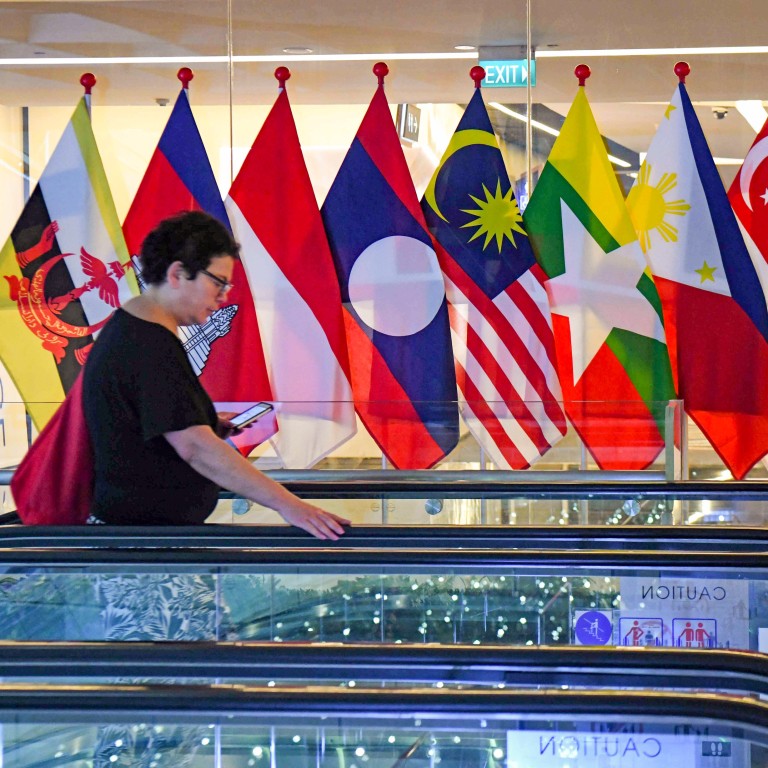
China urged to leverage Southeast Asia-led trade pact amid diversification trends
- Regional Comprehensive Economic Partnership (RCEP) allows China to diversify its supply chain and enhance ties with Southeast Asia, economists say
- The trade deal not only helps China mitigate global supply chain risks caused by the pandemic, but to capitalise on the ‘growing middle class in Southeast Asia’
Chinese companies should leverage regional trade deals to consolidate business ties with their Asian partners amid a heightened rivalry with the United States, economists and business executives said at the Boao Forum for Asia.
The experts said China could be using the Regional Comprehensive Economic Partnership (RCEP) to diversify its supply chain and seek more partnerships with Southeast Asian countries, which would help it climb up the industrial chain and keep competitive.
RCEP, comprising 15 member countries including China, took effect on January 1 last year and is the world’s largest trade pact, covering about a third of the world’s population and 30 per cent of global gross domestic product (GDP).
“RCEP offers great opportunities in terms of policy and tariffs, the [shipping] industry including our company, plans to move into Southeast Asia and into emerging markets in the future,” Feng Bo, executive vice-president of China COSCO Shipping Corporation Limited, said at the forum on Tuesday on the tropical island of Hainan.
World’s largest free trade deal is under way, but what is RCEP?
The global shipping industry has been challenged by the lack of terminal positions at ports and increased operating costs for companies due to their social and economic responsibility to reduce carbon emissions and protect the environment, Feng said.
By leveraging emerging markets, third country markets, or regionalised markets, multinational companies can reduce supply chain uncertainty and seize new opportunities, Feng said.
China has been reaching out to Southeast Asian nations to boost trade and economic cooperation, and economists said companies should beef up participation in the RCEP to upgrade their ties with the regional economy.
Sui Pengfei, head of the international cooperation department at China’s Ministry of Agriculture and Rural Affairs, said at the forum on Wednesday that China and Southeast Asian countries should make full use of the policies of regional trade pact such as RCEP and the China-Asean free trade agreement to forge closer trade ties.
The Association of Southeast Asian Nations (Asean) comprises the Philippines, Indonesia, Malaysia, Singapore, Brunei, Thailand, Vietnam, Cambodia, Laos and Myanmar.
Dalian Infobank, a Chinese trade data provider, estimated in February that China’s exports to RCEP countries contributed 16.78 per cent of GDP growth in 2022, much higher than the 5.89 per cent in 2021, before RCEP took effect.
Yao Yang, dean at the National School of Development with Peking University, said at the forum that despite the fact companies were moving facilities to Southeastern Asia, some were shifting services back to China.
The middle class in Malaysia, Indonesia, Vietnam, Philippines is growing
“That’s actually a good thing for China because that means Chinese industry types upgraded,” Yao said.
“It’s also good for surrounding countries, Asean countries, India and all the developing countries in Asia, and that’s going to help China to deal with the political situation because those countries will be more integrated with China’s manufacturing.”
Fabrizio Ferri, head of Asia-Pacific for Fincantieri SPA, said multinational companies turned to Southeast Asia not only due to the need to mitigate global supply chain risks caused by the pandemic, but for the “growing and booming middle class in Southeast Asia”.
“The middle class in Malaysia, Indonesia, Vietnam, Philippines is growing. They want better products and service,” said Ferri.


